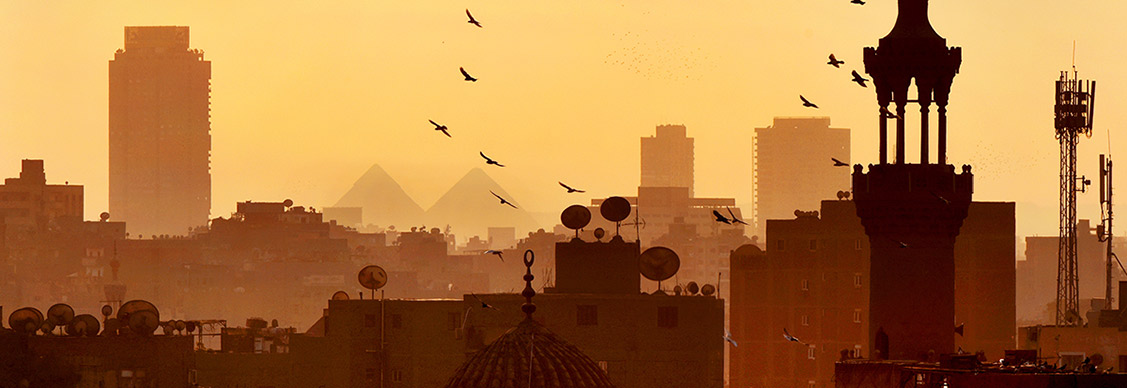Revitalizing Historic Cairo with Sustainable Approach
Ayah Ghanem, Head of Strategic Consulting – Africa at JLL
New urban communities emerging across the Egyptian capital are creating unprecedented development opportunities and driving accelerated returns on investment for real estate investors. Aligned with the goals of Egypt Vision 2030, which aims to expand urban areas to enhance the quality of life and meet the needs of a rapidly growing population, several new and heritage locations across the capital are experiencing a surge in urban renewal. This is evident, especially in the New Administrative Capital and the historic centre of Downtown Cairo, which are both transforming the capital’s landscape and becoming key players in the regional real estate market. As ministries and government entities, state-run and private banks, embassies, and other vanguards of the Egyptian economy relocate to the technologically advanced, smart city of the future, in parallel, the old capital is also undergoing swift transformation, and its legacy buildings are being reimagined under a master plan to rejuvenate central Cairo.
With the new capital city taking up capacity and becoming fully functional, greenfield opportunities across different scales and asset classes are springing up in new urban areas such as New Cairo and 6th of October. However, developments within the heart of the city, in Downtown, are mainly brownfields, through asset repurposing and retrofitting of historical buildings and vacant properties. Led by the Sovereign Fund of Egypt (TSFE), these brownfield opportunities, when complete, will redefine the face of Downtown Cairo, delivering a new landscape for the emergence of vibrant, inclusive communities.
Work on these developments aims to reignite the tourism and real estate sectors, coming at a time when the country is attracting record FDI inflows and has significantly improved its external liquidity outlook in Q1 2024. With greater stability in the country’s macroeconomic environment, Egypt is also experiencing a new surge in investor confidence, marking a turning point in the sustained growth and development of the country’s real estate market.
Looking for more insights? Never miss an update.
The latest news, insights and opportunities from global commercial real estate markets straight to your inbox.
Rooted in millennia of history, Cairo is a sprawling thousand-year-old world heritage site, dense with workshops, souks, and dwellings. While some parts of the city were built between the 10th to 14th centuries, the city centre that emerged in the second half of the 19th century was modelled on the designs of French city planning. In the modern era, Cairo has continued to remain the political and cultural heart of Egypt but its once elegant buildings which housed administrative and governmental entities, are now undergoing much-needed maintenance and repair to restore them to their former glory. A dramatic transformation, through adaptive reuse and thoughtful renovation, is at the heart of this ongoing urban revitalisation strategy, and underscores Egypt's commitment to mitigating the environmental impact of new constructions.
With the restoration of brownfield sites, value accrues not merely in the form of ROI, but it is also about tenant attraction and retention. Given the acute shortage of net zero carbon (NZC) buildings, retrofitting real estate holdings, and doubling down on emissions performance brings real benefits by boosting rents and maximising operational efficiencies. By upgrading their stock in Downtown Cairo, Egypt's sovereign wealth fund hopes to bring the sector’s decarbonisation roadmap on track, enabling investors to continue to attract the most coveted and best quality tenants to maintain or improve net operating incomes.
Custom Not Found
Cannot serve request on this server.
In the context of Egypt's administrative transition, the creation of ‘new’ sustainable assets and communities in the old capital in the form of mixed-use redevelopment projects, commercial hubs, and cultural centres, assumes added significance, especially considering the location connectivity. Overlooking the majestic Nile and in proximity to key arterial roads and transportation networks including the metro and railways that facilitate seamless connectivity to major commercial, cultural, and recreational destinations, Downtown Cairo has an irresistible appeal for residents and businesses seeking convenience and connectivity in the heart of the city.
More than the tangible financial returns, the intangible benefits of heritage buildings in Cairo attract investors who value authenticity and uniqueness, while more corporates and individuals are today willing to pay a premium for leasing a building with sustainability or green credentials. Developed in partnership with the private sector, the community engagement, financial viability, and architectural compatibility of Cairo’s cultural heritage preservation are key to fostering socioeconomic development. Informed decisions made by policymakers, planners, and investors will further enhance both cultural and environmental value while driving future investments for urban transformations in the protected area.
In an industry where ‘the greenest building is the one that already exists’, the repurposing project that takes into account the many layers of the city’s historic social and cultural fabric including its residents, crafts, monuments, and other infrastructure, is vital to preserve the city’s historical character and respect its past while embracing the future.
Contact Ayah Ghanem
Head of Strategic Consulting – Africa at JLLWhat’s your investment ambition?
Uncover opportunities and capital sources all over the world and discover how we can help you achieve your investment goals.
